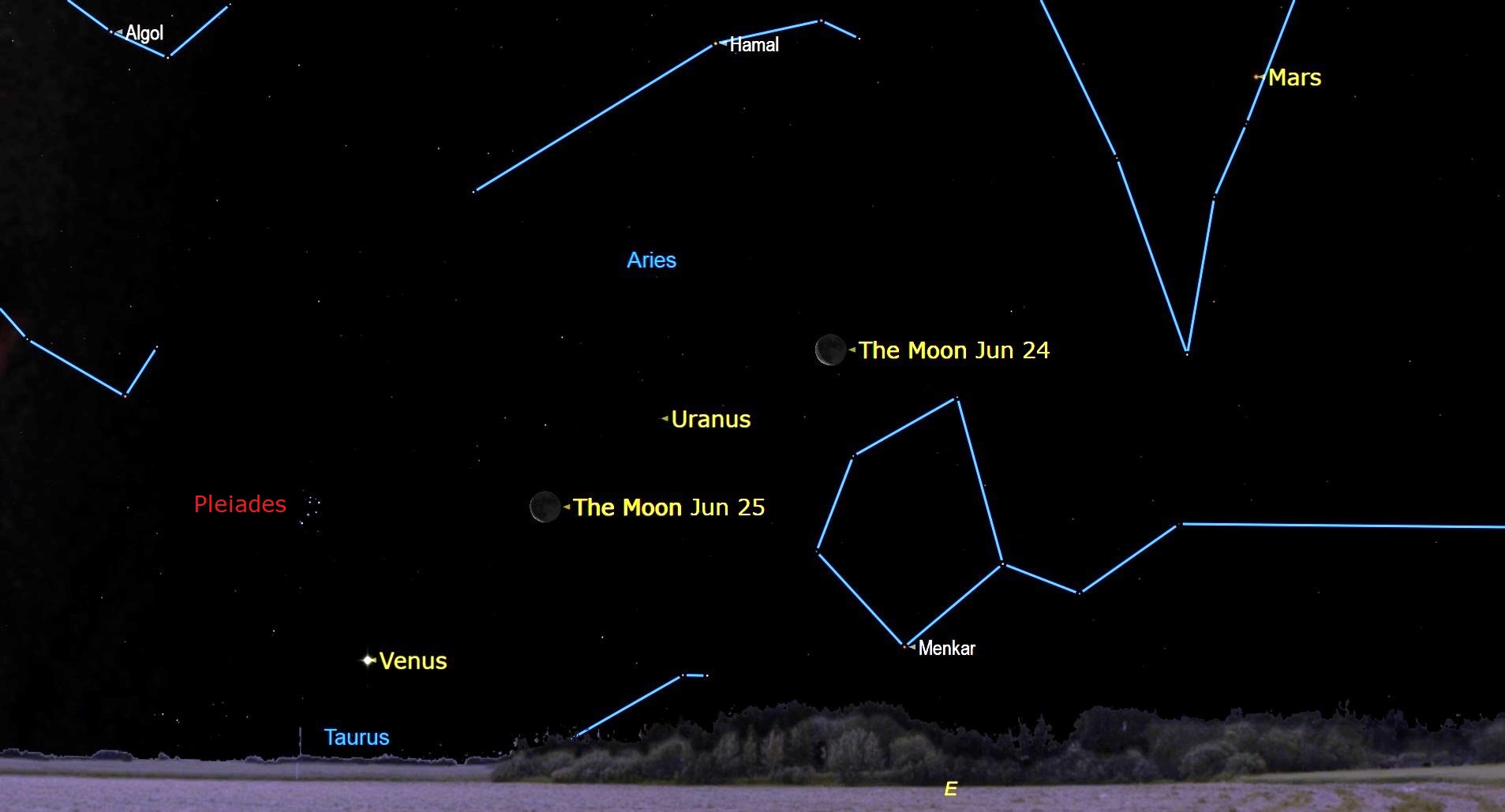See the moon 'jump' over Uranus in the predawn sky this week
The event will be visible with a pair of binoculars.

Look to the eastern sky before dawn on Friday (June 24) and Saturday (June 25) and the moon will appear to have jumped over Uranus.
On Friday "the old crescent will shine a generous palm's width to the upper left (or 6.5 degrees to the celestial southwest) of the small, magnitude 5.8 speck of Uranus" writes Chris Vaughan, amateur astronomer with SkySafari Software who oversees Space.com's Night Sky calendar.
"The following morning, the moon will hop east to sit 5 degrees to Uranus' lower-left," Vaughan writes. The duo will be close enough to share the view in a pair of binoculars.
Related: The brightest planets in June's night sky: How to see them (and when)

Looking for a telescope for the next stargazing event? We recommend the Celestron Astro Fi 102 as the top pick in our best beginner's telescope guide.
Observers in the Southern Hemisphere — specifically in western and northern Australia and eastern Indonesia — will see the moon occult Uranus before dawn on Saturday.
The moon is currently embarking on a tour of the morning planets, its next port of call is Venus on June 26 then Mercury on June 27.
The moon's planetary "meet and greet" is not the only skywatching event to watch out for in the coming weeks. Throughout June, stargazers are being treated to a rare "planet parade" where all five naked-eye planets will be visible in the predawn sky as they line up in their orbital order from the sun. From left to right in the southeastern sky, you'll be able to spot Mercury, Venus, Mars, Jupiter and Saturn all in a row.
Get the Space.com Newsletter
Breaking space news, the latest updates on rocket launches, skywatching events and more!
Hoping to capture a good photo of the moon as it makes its way past the morning planets? Our guide on how to photograph the moon has some helpful tips. If you're looking for a camera, here's our overview of the best cameras for astrophotography and best lenses for astrophotography. As always, our guides for the best telescopes and best binoculars can help you prepare for the next great skywatching event.
Follow us on Twitter @Spacedotcom and on Facebook.
Join our Space Forums to keep talking space on the latest missions, night sky and more! And if you have a news tip, correction or comment, let us know at: community@space.com.

Daisy Dobrijevic joined Space.com in February 2022 having previously worked for our sister publication All About Space magazine as a staff writer. Before joining us, Daisy completed an editorial internship with the BBC Sky at Night Magazine and worked at the National Space Centre in Leicester, U.K., where she enjoyed communicating space science to the public. In 2021, Daisy completed a PhD in plant physiology and also holds a Master's in Environmental Science, she is currently based in Nottingham, U.K. Daisy is passionate about all things space, with a penchant for solar activity and space weather. She has a strong interest in astrotourism and loves nothing more than a good northern lights chase!









